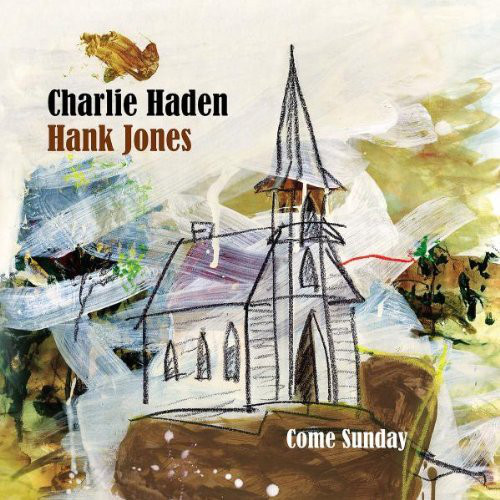Although they may not have the name recognition of jazz legends like Herbie Hancock or Miles Davis, Charlie Haden and Hank Jones were every bit as talented.
And while they enjoyed success as band leaders, they each spent important parts of their careers as sidemen – Haden for as part of the Ornette Coleman Quartet, and Jones for Cannonball Adderley on the seminal album Somethin’ Else.
They also showed up in some unexpected places. Charlie Haden played bass on “Ramshackle” – the last song on Beck’s 1996 album Odelay, and beautiful in its own right. Not to be outdone, Hank Jones played piano in perhaps the ultimate ‘sideman’ act of the 1960s: Marilyn Monroe’s infamous “Happy Birthday, Mr. President” at Madison Square Garden in 1962.
But whereas some musicians might have yearned to break free of the sideman label and carve out a spot for themselves on the Mount Rushmore of jazz, Haden and Jones seemed, in the interviews I’ve watched anyway, to be very self-effacing and contented people.
It feels fitting that the last album either of them worked on, released two years after Jones’ death and two years before Haden’s, was one they did together: a collection of spirituals and carols called Come Sunday.
Come Sunday is the ultimate sideman’s album. None of the songs were written by Jones or Haden, and despite being filled with tracks whose lyrics are widely known, the album is entirely instrumental. It’s as if they’re inviting the listener to join in as the third member of an open-ended trio.
At times joyful, at times meditative, the album’s most majestic moment comes with their version of “Going Home.”
What makes this a beautiful song:
1. Listen to the delicate, confident touch Hank Jones exerts on the piano, and then realize he was ninety-one when he recorded this.
2. Listen to the way Charlie Haden happily hangs out on one note at times, allowing Jones to carry the chord changes. A gifted improviser, he has the restraint to stand still when the song calls for it.
3. Although Paul Robeson’s version of this song has led many people to mistakenly believe it was a traditional spiritual song, it was in fact a symphony by Dvorak first. Having said that, Dvorak was consciously trying to write music based on traditional North American melodies…so what you’re listening to is actually a 21st-Century American jazz version of a Czech Romantic-era composer’s extrapolation of traditional American culture.
So in a way, this song condenses 200+ years of music into its four minutes. A great way for two greatly underappreciated musicians to wrap up their careers.
Recommended listening activity:
Buying a drink for a friend.
